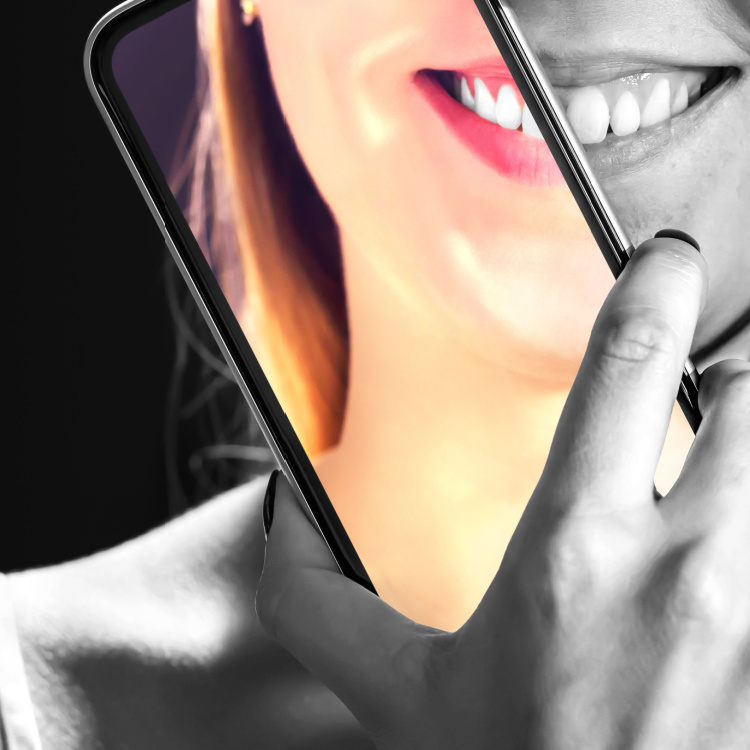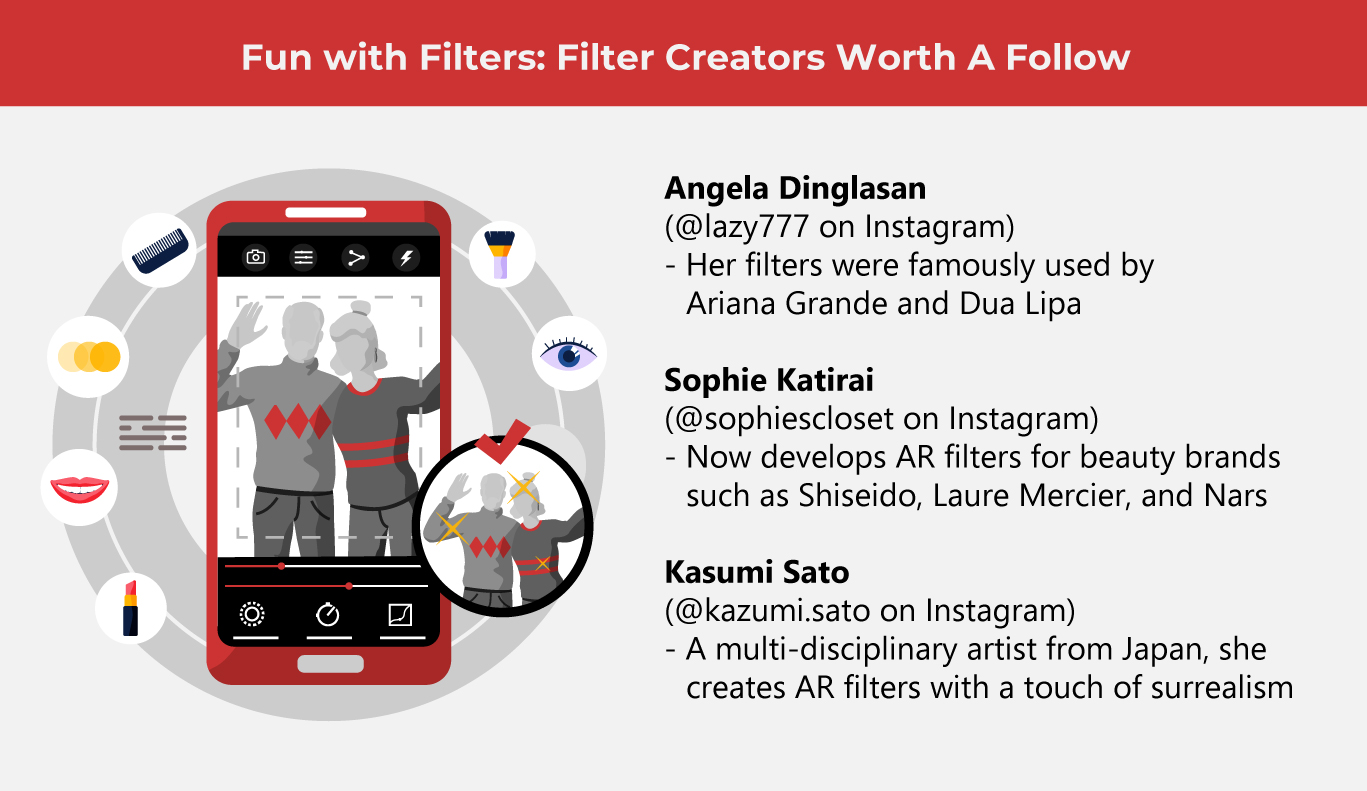For the Love of Photo Filters

In the age of selfies and social media, uploading the most flattering photo of oneself seems to be a requirement. That’s what filters are for.
Who among us can claim they’ve never used a photo filter when taking a selfie? There’s no way anyone who has an active Facebook, Instagram, and/or TikTok account would never have used a filter before uploading a photo of themselves. These days, using filters is a normal part of our digital lives. By now, selecting a filter before we upload selfies is automatic.
Photo filters can add effects to make our photos more beautiful. A boring shot can be tweaked with filters to enhance the composition’s overall lighting, brightness, saturation, and other elements. Before social media, photo enhancements were done through photography applications such as Photoshop.
Today, almost everyone carries around in their pockets an entire photography studio, complete with image-enhancing add-ons that can improve an image instantly, and with virtually infinite possibilities to do so.
It’s all thanks to advancements in augmented reality and AI.
(Also Read: AI Art But Is It Really Art)
But first, let’s take a selfie
What did we do before front-facing cameras? We positioned our cameras in front of our faces without being able to see ourselves in the frame and hoped for the best. The advent of mobile phones with front-facing cameras changed everything about how we took photos of ourselves and our everyday lives.
The first mobile phone with a front-facing camera was released by Kyocera in 1999, ushering in the age of selfies. For the first time, people could see how they looked in the frame before snapping a pic. The problem was, not many people liked the results. Perhaps it was a matter of camera angle, or lighting but many found their digital self-portraits unflattering.
The invention of selfie sticks addressed camera angles. Angling the camera at different angles could make the subject appear slimmer or taller, but when it came to facial features, selfies were still left wanting. That’s where filters came to the rescue.
By the early 2000s, social media websites such as Facebook and MySpace became a hub for people posting selfies. In 2011, Snapchat came along to speed up social media usage via apps on mobile phones. The selfie gained traction throughout the early aughts and 2010s. Naturally, people wanted to look their best in them. By 2013, the word “selfie” made it as Oxford Dictionary’s Word of The Year.
Focus on the filters
According to the MIT Technology Review, the most widespread use of augmented reality isn’t in video games. It’s filters.
Today’s photo filters use artificial intelligence combined with computer vision to process facial features in images and enhance them. Filters use this computer vision to interpret what the camera lens sees, then change them according to the rules that the filter’s creator has set.
When it comes to faces, the filter detects each facial feature and then creates a template over the face in a sort of grid or mesh, where graphics and animation can be attached.
Alfred Manasseh, a metaverse developer says that “artificial intelligence and augmented reality filters are all about machine learning, computer vision, and graphics overlays. The technology maps the face using a facial detection algorithm that identifies key facial landmarks like the eyes, nose, and mouth.”
The reason why the filters we use on Instagram do not distort and appear to move along with us in real-time is because of machine learning. Manasseh adds that filters “use cast amounts of facial data to predict movements, which ensure the filter moves naturally.”
There are an infinite number of filters that are publicly available for use today, and most of them are free to use and are created by independent filter creators. There are beauty enhancement filters that can smoothen one’s complexion, slim down facial features, and even add makeup. There are also more fantastic filters that can transform someone’s face into monsters or add cute details such as cat ears. 
Strike a pose, there’s nothing to it
Like any piece of technology that can be used and misused, filters have presented a few problems.
One argument made against filters is that many use filters misleadingly, especially when it comes to dating and romantic relationships. People come to find someone’s photo on their social media profile attractive, only to get disappointed when they meet the person in real life because they don’t resemble their photo.
Another problem filters present is related to one’s self-esteem. Some studies have found that filters impact how young people perceive themselves and that there may be negative effects of relying too much on filters. Many find that without using filters on their photos, they don’t like the way they look and become dissatisfied with their “unfiltered faces”, thereby affecting their self-esteem.
On the one hand, parts of that may be true. Psychology Today says that most people use filters because they feel pressure to look a certain way. Other studies showed that younger people who had self-esteem issues and poor body image were more likely to use filters and that it could “reinforce the negative belief that their bodies are not good enough”.
On the other hand, many approach filters as art, as a way to play and explore different personas safely.
The world of filter creation is a fascinating one. Many artists who have been formally trained in Fine Arts have discovered AR filters as a new outlet for expression and creativity. Some have even used their talent to work with some of the biggest makeup brands in the world. For every article that warns people of the pitfalls of excessive filter usage, there are many more who see filters as a playground and see more positive effects over negative ones.
Since filters are here to stay, it may be smart for us to learn how to use these properly to keep ourselves safe from any potential problems they may bring. A healthier approach to our appearances may be the key to becoming more satisfied with our looks, and not an overdependence on technology to “hide” whatever flaws we may perceive we may have.
As one of the Top 20 EMS companies in the world, IMI has over 40 years of experience in providing electronics manufacturing and technology solutions.
We are ready to support your business on a global scale.
Our proven technical expertise, worldwide reach, and vast experience in high-growth and emerging markets make us the ideal global manufacturing solutions partner.
Let's work together to build our future today.
Other Blog



